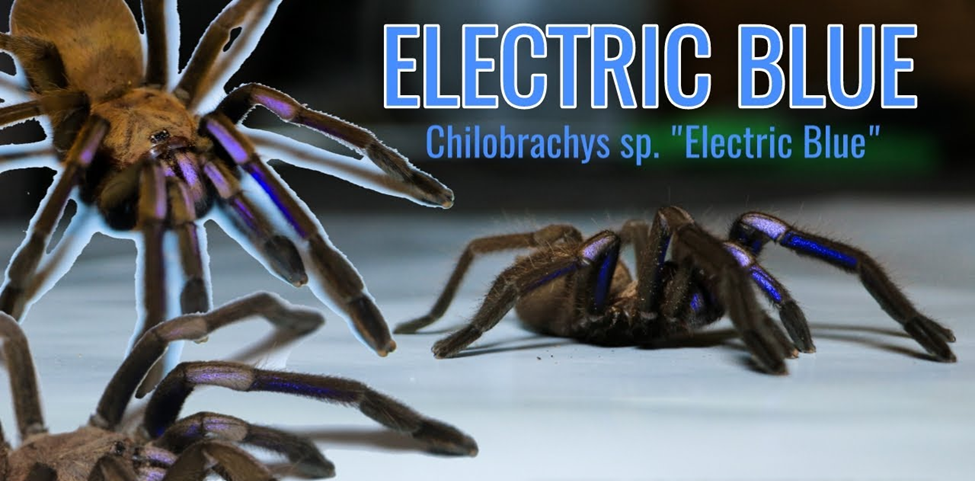CHILOBRACHYS NATANICHARUM

Copyright infringement not intended
Picture Courtesy: thespidershop.co.uk
Context: Scientists have found a new species of tarantula in Thailand with a mesmerizing electric blue hue. The tarantula, named Chilobrachys natanicharum, was found in the mangrove forests of Phang-Nga province.
About Chilobrachys natanicharum
- Tarantulas are a type of spider known for their large size, often characterized by their hairy appearance and robust build. Tarantulas belong to the family Theraphosidae, which is one of the largest spider families. This family includes a wide variety of species found in different parts of the world.
- Chilobrachys natanicharum is a newly discovered species of tarantula found in the forests of Thailand. It is notable for its striking blue-violet hue, which resembles the colour of electrical sparks. This unique colouration is not due to the presence of blue pigmentation but rather results from the special structure of the spider's hair.
- The blue colouration is achieved through nanostructures present on the spider's hairs, which manipulate light to create a vibrant blue appearance.
- These nanostructures are found on various parts of the spider's body, including its legs, chelicera (pincer-like mouth appendages), and carapace (upper shell).
- This adaptation is an excellent example of how nature can use structural features rather than pigments to produce vivid and unusual colours.
- Chilobrachys natanicharum is known to inhabit both terrestrial and arboreal environments. It can be found living within tree hollows, which indicates its ability to thrive in a variety of habitats within the forest. This tarantula's discovery and its unique colouration highlight the ongoing exploration and discovery of new species in the natural world, shedding light on the incredible diversity of life on our planet.
Key Characteristics and Facts about Tarantulas
|
Habitat |
●Tarantulas can be found in a variety of habitats, including tropical rainforests, deserts, grasslands, and forests. They are especially diverse in the Americas, but they can also be found in other regions. |
|
Size |
●Tarantulas vary in size, but they are generally larger than most other types of spiders. Adult tarantulas can range from a few inches to over 10 inches in leg span, depending on the species. |
|
Appearance |
●Tarantulas are often recognized by their hairy bodies and legs. The hair on their bodies serves various purposes, including sensory functions and protection. These hairs can come in various colours and patterns, as seen in the case of the Chilobrachys natanicharum with its blue-violet hue. |
|
Behaviour |
●Tarantulas are primarily nocturnal predators. They use their strong jaws and venomous fangs (chelicerae) to subdue and consume prey, which can include insects, small vertebrates, and other arthropods. |
|
Lifestyle |
●Tarantulas can be both terrestrial (ground-dwelling) and arboreal (tree-dwelling), depending on the species. Some species live in burrows, while others may create silk-lined retreats in trees or other elevated locations. ●The lifespan of tarantulas varies among species but can range from several years to several decades. Some tarantulas have relatively long lifespans, and they may go through multiple moulting stages as they grow. |
|
Venom |
●While tarantulas are venomous, their venom is usually not considered dangerous to humans. Bites from most tarantula species are generally no worse than a bee or wasp sting, causing localized pain and discomfort. |
Conclusion
- Tarantulas are a diverse group of large, hairy spiders found in various parts of the world. They exhibit a wide range of behaviours and adaptations, making them a fascinating subject of study for arachnologists and enthusiasts alike.
|
PRACTICE QUESTION Q. What type of habitat is Phang-Nga province known for? A) Desert B) Mangrove forests C) Alpine meadows D) Coral reefs Answer: B Explanation: Chilobrachys natanicharum was discovered in the mangrove forests of Phang-Nga province, known for its unique ecological characteristics. |




1.png)
